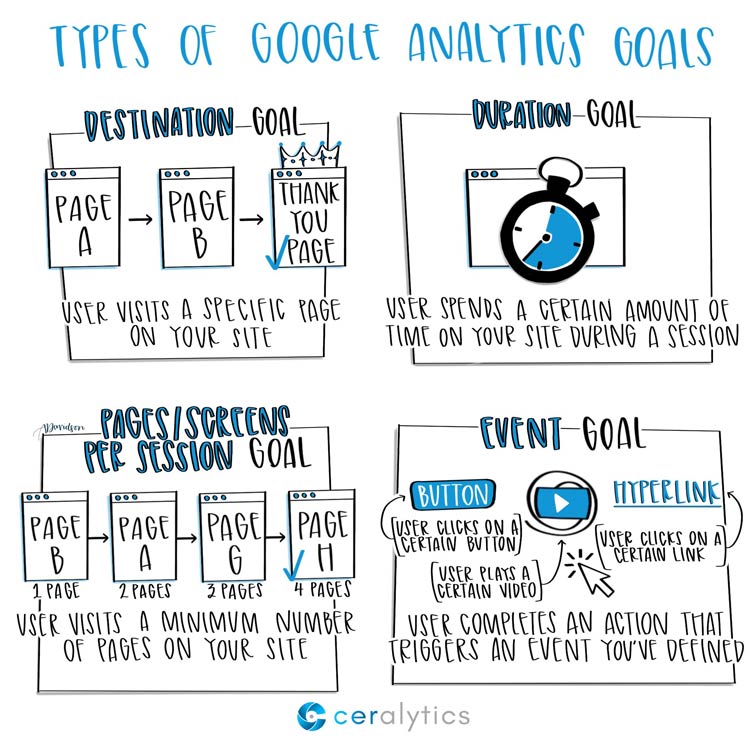What Data Is Google Analytics Goals Unable to Track: A Full Guide
What Data Is Google Analytics Goals Unable to Track: A Full Guide
Blog Article
Revealing the Blind Spots: Recognizing What Google Analytics Goals Can not Measure
In the world of electronic analytics, Google Analytics stands as an effective tool for tracking and assessing on-line individual interactions. Recognizing what Google Analytics objectives can not determine is important for acquiring a comprehensive view of user behavior and interaction.
Customer Behavior on External Operatings Systems
Understanding just how individuals engage on external platforms is crucial for maximizing online strategies. Exterior platforms, such as social media sites networks, recommendation internet sites, and online forums, play a significant duty in driving traffic to a company's website. By analyzing individual behavior on these platforms, organizations can gain useful insights into the effectiveness of their advertising initiatives and the preferences of their target audience.
One trick facet of customer behavior on outside systems is the referral source. By tracking where the users are originating from, companies can determine which systems are driving the most traffic to their site. This info can assist business allot their resources better, concentrating on the systems that produce the best outcomes.

Offline Communications and conversions
Examining user actions on external platforms gives useful understandings right into online approaches; nonetheless, thinking about offline conversions and interactions is similarly necessary for a thorough understanding of a firm's total efficiency. While Google Analytics excels at tracking on the internet interactions, it falls brief in recording the total consumer trip that often consists of offline touchpoints. Offline conversions, such as in-store acquisitions or phone queries, play a significant function in many companies' success. Disregarding these communications can lead to a distorted sight of the efficiency of advertising projects and general organization performance.

Attribution Beyond Last Click
When diving right into the world of digital advertising analytics, it becomes vital to look beyond the single touchpoint of the last click for a much more detailed understanding of acknowledgment. While Google Analytics provides valuable insights into customer habits, counting only on last-click attribution can be limiting - what data is google analytics goals unable to track. Attribution designs that exceed the last click supply a much more nuanced view of the customer trip, taking into account all the touchpoints that visit the website cause a conversion
Acknowledgment past the last click enables marketing professionals to designate credit scores to various interactions along the conversion course, offering a more clear image of the performance of various advertising channels. By discovering multi-touch acknowledgment models such as straight, time decay, or position-based acknowledgment, businesses can much better allocate their advertising and marketing spending plans and enhance their strategies for optimal influence.
Comprehending the influence of each touchpoint in the conversion procedure is crucial for making notified decisions and maximizing ROI. By welcoming attribution beyond the last click, organizations can get deeper understandings into consumer habits and tailor their advertising and marketing efforts more successfully.
Cross-Device and Cross-Browser Tracking

In a similar way, cross-browser tracking enhances cross-device monitoring by catching customer actions as they change between various web internet browsers. Comprehending exactly how individuals communicate with websites on different browsers can help marketing experts maximize their on-line experiences to image source ensure consistency and capability across different platforms.
Qualitative Information and User Intent
Recognizing individual intent with qualitative information analysis is important for creating targeted electronic marketing techniques that resonate with the needs and preferences of the target audience. Qualitative information gives understandings right into the 'why' behind customer activities, clarifying motivations, emotions, and preferences that quantitative information alone can not capture. By evaluating user feedback, comments, and communications, marketing professionals can reveal beneficial details concerning customer intent, permitting them to customize their messaging, web content, and offerings to much better line up with what their audience is seeking.
Qualitative data also aids in recognizing the context in which individuals engage with a site or app. This contextual understanding enables marketers to create more pertinent and individualized experiences, eventually driving higher engagement and conversion prices. By diving into user intent via qualitative data analysis, companies can gain a much deeper understanding of their target market, leading to extra efficient marketing techniques that fulfill users' expectations and demands.
Verdict
In verdict, Google Analytics objectives have limitations in measuring customer habits on outside platforms, offline conversions, acknowledgment past last click, cross-device and cross-browser tracking, and qualitative information associated with user intent. what data is google analytics goals unable to track. It is essential for companies to be familiar with these dead spots in order to supplement their data evaluation with other tools and methods to obtain an extra thorough understanding of their target market and improve their overall electronic advertising and marketing methods
By analyzing customer habits on these platforms, businesses can gain useful insights right into the efficiency of their marketing initiatives and the preferences of their target audience.
Assessing individual behavior on exterior systems supplies valuable understandings into online strategies; nevertheless, thinking about offline conversions and communications is similarly vital for a detailed understanding of a company's total efficiency.In digital marketing analytics, relocating past last-click attribution to explore cross-device and cross-browser tracking is important for getting an alternative understanding of individual communications throughout numerous systems and gadgets. By examining individual comments, comments, and interactions, online marketers can uncover important details about customer intent, allowing them to customize their messaging, content, and offerings to better straighten with what their target market is looking for.
By delving into customer intent via qualitative data analysis, businesses can gain a much deeper understanding of their target audience, leading to a lot more reliable advertising techniques that meet customers' demands and expectations.
Report this page